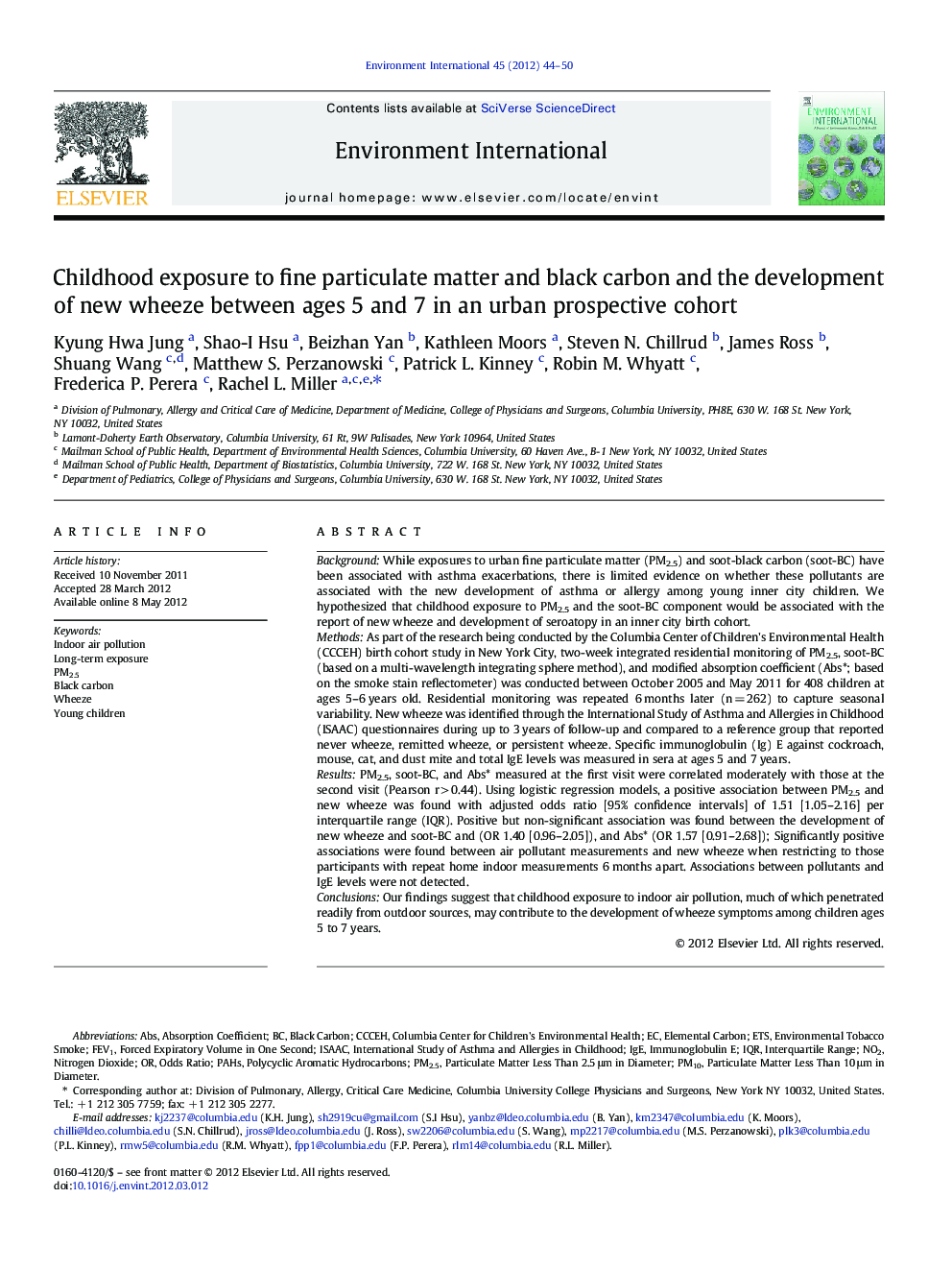| کد مقاله | کد نشریه | سال انتشار | مقاله انگلیسی | نسخه تمام متن |
|---|---|---|---|---|
| 4423040 | 1619082 | 2012 | 7 صفحه PDF | دانلود رایگان |

BackgroundWhile exposures to urban fine particulate matter (PM2.5) and soot-black carbon (soot-BC) have been associated with asthma exacerbations, there is limited evidence on whether these pollutants are associated with the new development of asthma or allergy among young inner city children. We hypothesized that childhood exposure to PM2.5 and the soot-BC component would be associated with the report of new wheeze and development of seroatopy in an inner city birth cohort.MethodsAs part of the research being conducted by the Columbia Center of Children's Environmental Health (CCCEH) birth cohort study in New York City, two-week integrated residential monitoring of PM2.5, soot-BC (based on a multi-wavelength integrating sphere method), and modified absorption coefficient (Abs*; based on the smoke stain reflectometer) was conducted between October 2005 and May 2011 for 408 children at ages 5–6 years old. Residential monitoring was repeated 6 months later (n = 262) to capture seasonal variability. New wheeze was identified through the International Study of Asthma and Allergies in Childhood (ISAAC) questionnaires during up to 3 years of follow-up and compared to a reference group that reported never wheeze, remitted wheeze, or persistent wheeze. Specific immunoglobulin (Ig) E against cockroach, mouse, cat, and dust mite and total IgE levels was measured in sera at ages 5 and 7 years.ResultsPM2.5, soot-BC, and Abs* measured at the first visit were correlated moderately with those at the second visit (Pearson r > 0.44). Using logistic regression models, a positive association between PM2.5 and new wheeze was found with adjusted odds ratio [95% confidence intervals] of 1.51 [1.05–2.16] per interquartile range (IQR). Positive but non-significant association was found between the development of new wheeze and soot-BC and (OR 1.40 [0.96–2.05]), and Abs* (OR 1.57 [0.91–2.68]); Significantly positive associations were found between air pollutant measurements and new wheeze when restricting to those participants with repeat home indoor measurements 6 months apart. Associations between pollutants and IgE levels were not detected.ConclusionsOur findings suggest that childhood exposure to indoor air pollution, much of which penetrated readily from outdoor sources, may contribute to the development of wheeze symptoms among children ages 5 to 7 years.
► Repeated measures, 6 months apart, may reflect reasonably chronic exposure to air pollution.
► High PM2.5 levels may be associated with the development of new wheeze among young children.
► Soot-BC may be the health relevant constituent of PM2.5.
► Associations between traffic-air pollution and allergy symptoms were not found.
Journal: Environment International - Volume 45, 15 September 2012, Pages 44–50